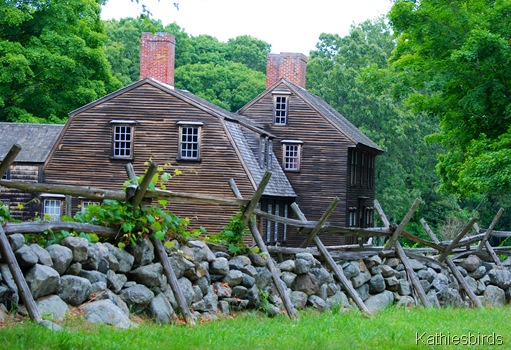Natural Fences
A friend sent me the following link to a video of "hedgelaying" in England: http://youtu.be/iGncS_lojlI
Interesting to watch, but makes me appreciate my high-tensile fences even more!
I remember my grandpa telling me that the extensive osage orange hedges around their farm in Kansas were originally planted as living fences. I have a hard time envisioning how an osage planting would work for that purpose today, unless woven wire was stapled to the trunks. A northeast version of this was multiflora rose: https://archive.org/details/multiflorarosefo256ande_0 Maybe a combination of osage and multifloral rose would work? If not, then maybe one could apply for NRCS cost-share to later eradicate the unwanted multiflora rose :)
My favorite definition of agroforestry is "working trees and shrubs in ag landscapes", so the Living Fence concept seems to fit nicely within silvopasturing. Anyone have experience or ideas on how to make this work from a practical standpoint in the Northeast?
Tags:
Replies to This Discussion
-
Permalink Reply by Ann Wilhelm on December 16, 2014 at 11:14am
-
I don’t know about living fences, though my uncle introduced multiflora rose to our farm many years ago, and it has been a scourge to us ever since!
We are considering erecting a Jack-Leg fence, also sometimes called a Buck-and-Pole fence. I would like to hear about other people’s experiences with this type of natural fence, particularly the livestock they contained with it and the hours of labor required to construct such a fence. The pictures below show the type of fence I envision.
We are currently removing birch saplings from a stand of white pine, so we have an abundance of 3-6 inch diameter poles. The stand of white pines is adjacent to an area we are converting to silvopasture. I would like to use the birch poles to enclose the silvopasture area, with an eye towards putting hogs on the land for a few years. Does anyone have suggestions, comments, or experiences to share?
- Attachments:
-
-
 Jack-leg fence.jpg, 28 KB
Jack-leg fence.jpg, 28 KB -
 temp2.jpg, 16 KB
temp2.jpg, 16 KB
-
-
Permalink Reply by Brett Chedzoy on December 18, 2014 at 11:10am
-
Birch is one of the least decay-resistant woods. Even if elevated off the ground, I don't think the birch poles will last more than a few years.
-
 Permalink Reply by Keith Ohlinger on December 28, 2014 at 2:08pm
Permalink Reply by Keith Ohlinger on December 28, 2014 at 2:08pm -
Brett I am working on an Osage Orange fence right now. The biggest challenge was how to harvest the seeds. I could find no literature on how to do it large scale. I picked 3/4 of a full size pick-up bed of pods and each pod supposedly has about 200 seeds in it. I ended up letting them rot down over winter and then finished off the remains in a 110 gallons water trough. Not sure of the viability of the seeds though. Will have to let you know. This year I laid pods along the fence line every 6-12 inches and will see what sprouts. I am soaking a smaller number in a 75 gallon tank to harvest the seeds and plant them, the seedlings will then be planted in the fence row. I also will push some pods directly into the ground to see how they come up too. I enjoyed the videos as that is roughly what I will be doing to create the living fence of Osage Orange.
-
Permalink Reply by Ben Hartwell on January 19, 2015 at 10:08pm
About
Forum
Hi! Newbie here...
Started by Lolly Winne Clough Jun 18. 0 Replies 0 Likes
Hello everyone! I'm Lolly and I'm new here. 👋 I was just wondering if there's an organization in Chenango County that will assess your land and assist with a silvopasture plan? I have about 4 acres…Continue
Silvopasture article in Modern Farmer
Started by Brett Chedzoy May 27. 0 Replies 0 Likes
Nice overview of silvopasturinghttps://modernfarmer.com/2025/05/silvopasture/Continue
overwintering sheep in the woods
Started by Gabe Smith. Last reply by Brett Chedzoy Feb 5. 1 Reply 0 Likes
Is there a reasonable way to manage grazing in the woods during winter or using it as an overwintering site in place of a barn (there is no current barn)? The woods are shruby with multiflora rose,…Continue
river locust anyone grazing animals on it
Started by Jonathan Bates Nov 14, 2024. 0 Replies 1 Like
Wondering what folks experience is with this plant Amorpha fruticosa... Here is a cool video that includes a silvopasture that is utilizing it:…Continue
© 2025 Created by Peter Smallidge.
Powered by
![]()


